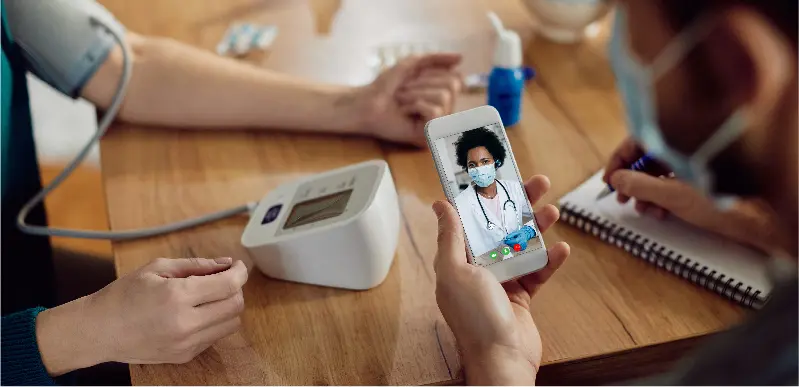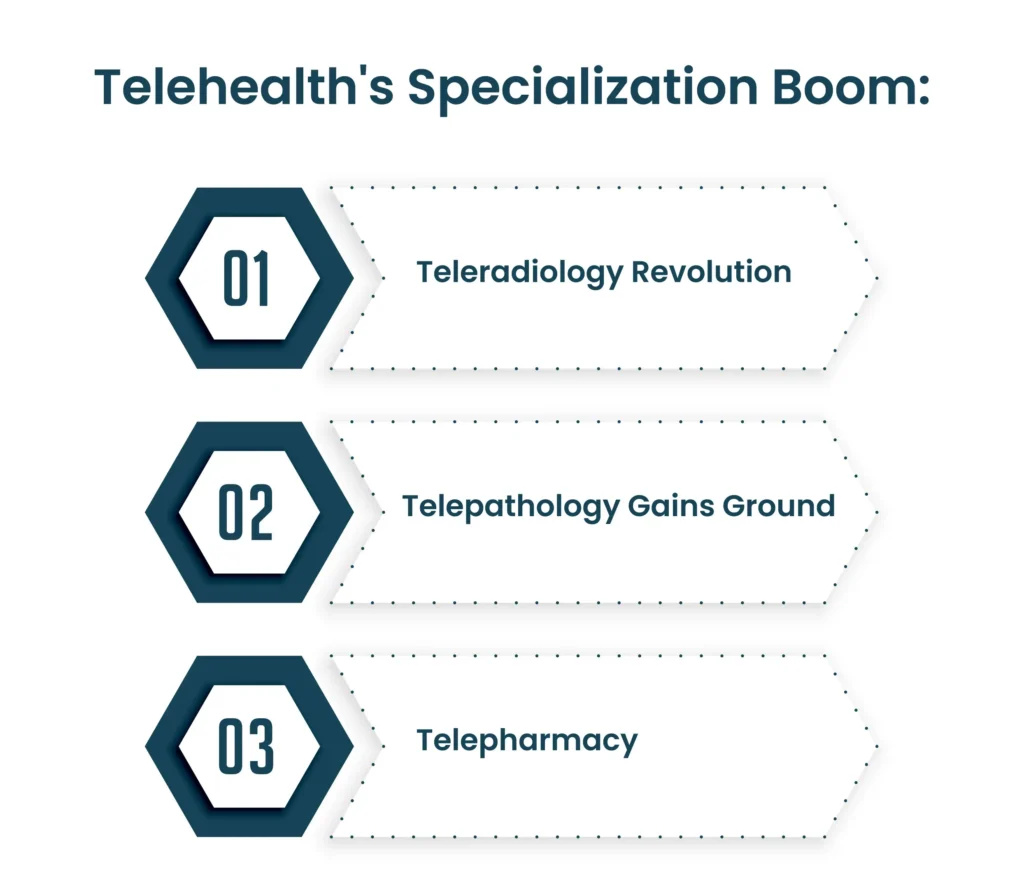

Many assume the telehealth revolution was born out of the COVID-19 pandemic, a forced adaptation to unprecedented circumstances. However, the roots of telehealth run far deeper. The idea of providing medical care from a distance has fascinated innovators for centuries.
From early experiments with the telephone to today’s sophisticated video consultations and remote monitoring, The story of telehealth is a testament to human creativity and a steadfast desire to overcome obstacles in providing healthcare.
Join us as we travel through time, exploring the innovations, challenges, and forward-thinking ideas that have shaped telehealth into what it is today.
Health care at a distance might seem like a thoroughly modern concept, but its seeds were planted long ago. An 1879 article in the prestigious medical journal The Lancet discussed the telephone’s potential to reduce unnecessary doctor visits.
In 1925, Science and Invention magazine’s cover depicted a futuristic vision: a doctor diagnosing a patient remotely via radio and a device enabling video examinations.
The 1960s proved to be a pivotal decade for telehealth. With the Space Race in full swing, NASA’s pioneering research into monitoring astronauts’ health from afar drove the development of remote monitoring technologies. These innovations would ultimately find applications within Earth-bound healthcare.
In 1959, they established a closed-circuit television link to provide remote mental health consultations to a Norfolk, Nebraska hospital. This demonstrated the feasibility of telemedicine for specialized care.
A microwave video link was established to connect doctors at Massachusetts General Hospital with patients at an airport medical station, showcasing telehealth’s potential for urgent care situations.
The 1980s witnessed major leaps forward for telehealth. Doctors could now send X-rays, CT scans, and other medical images digitally, which meant that patients could get expert opinions from specialists who were miles away.
The military also began using telemedicine to support field hospitals and provide care in remote areas, pushing the boundaries of healthcare technology. Teleradiology, where radiologists interpret scans remotely, became one of the earliest successful applications of telehealth.
The 1990s were marked by the widespread use of the internet. This made telehealth cheaper and much more accessible, paving the way for video consultations and easier data transfer. Recognizing its potential to help people in rural communities, the government began supporting telehealth projects.
This decade also saw experiments with remote patient monitoring (RPM) for chronic diseases. Early RPM devices allowed patients to send data like vital signs to their healthcare providers from home.
Broadband Expansion and Video Calling: The growth of broadband internet access in households made video consultations more practical and reliable. This improved the quality of provider-patient interactions compared to earlier telemedicine attempts.
Early Acceptance of RPM: Remote Patient Monitoring (RPM) started gaining more traction. While technology was still developing, the potential benefits for chronic condition management became clear. Doctors could track blood pressure, glucose levels, and other vital signs remotely, potentially preventing complications and hospitalizations.
Policy Shift and Reimbursement: The early 2000s saw a gradual shift in healthcare policy, with Medicare and some insurers beginning to reimburse for select telehealth services. This was a crucial step in incentivizing broader adoption.
Focus on Chronic Diseases: Telehealth and RPM were widely explored for the management of chronic conditions like diabetes, heart failure, and COPD. These conditions required frequent monitoring, making them ideal candidates for remote care innovation.
While general telehealth consultations were gaining ground, the early 2000s also saw remarkable growth in specialized fields within telehealth:

For over 60 years, teleradiology has enabled crucial images like X-rays and CT scans to be shared across vast distances for expert interpretations. The adoption of the DICOM standard streamlined this process, and its impact has been significant – reducing unnecessary patient transfers and ensuring timely, accurate diagnoses.
Digitizing pathology slides, despite the large file sizes, has transformed this field. Telepathology allows for remote consultations with specialist pathologists, leading to more precise diagnoses, as studies have demonstrated.
Telepharmacy combines remote consultations with technology for order entry, review, and even dispensing. This not only saves patients miles of travel (especially those receiving specialty care like cancer treatment), but also increases medication safety by enabling remote pharmacists to identify and prevent potential errors.
While telehealth started with the goal of making basic consultations more accessible, it has evolved significantly. Remote Patient Monitoring (RPM) devices now constantly collect health data, from blood sugar levels to heart rhythms. This data empowers doctors to make informed, real-time decisions, and proactively intervene before problems escalate.
Telehealth isn’t just about replacing office visits; it offers a suite of tools. Secure messaging enables quick patient-provider communication, virtual triage streamlines the care process, and online portals let patients manage their own records and appointments.
The wealth of data from RPM devices, coupled with telehealth’s accessibility, enables doctors to truly tailor treatment plans to individual patients, improving outcomes and patient experience.
RPM and telehealth have tremendous potential for underserved communities, bringing healthcare directly to patients regardless of location. This is a major step towards healthcare equity.
The future of telehealth is one of constant evolution. While challenges exist, the potential to make healthcare more accessible, personalized, and preventative is immense. It’s clear that telehealth will become an integral component of the healthcare experience, shaping the way we deliver and receive care for decades to come.
Artificial Intelligence (AI) Integration
Augmented and Virtual Reality (AR/VR) Applications
Expanding Accessibility and Reach
Telehealth’s journey from distant dreams to a cornerstone of modern medicine is a story of innovation overcoming obstacles. From early telephone consultations to sophisticated remote monitoring, the goal has always been to make healthcare more accessible.
While the future holds many exciting developments, one thing is certain: telehealth isn’t just a trend; it’s a transformative force here to stay. As technology improves and we embrace its potential, telehealth will continue to reshape the way we experience healthcare, bringing personalized care within reach for everyone.
Talk to an Expert Now